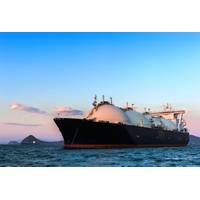Bureau Veritas Issues New FSRU Guidelines
Bureau Veritas has issued new and updated notations and guidance to support the construction and operation of both Floating Storage and Regasification Units (FSRUs) and Floating Storage Units (FSUs).
Interest in FSRUs and FSUs is growing as floating gas terminals offer operational flexibility, reduced timescales, from concept to operation, and cost effectiveness in comparison with onshore terminals. Additionally, converting existing liquefied natural gas (LNG) carriers offers a fast route to operational availability. There are more than 20 LNG carriers presently in laid-up condition, and many of them are candidates for conversion to floating terminal applications, such as FSRU or FSU operations. Bureau Veritas said its new conversion guidelines provide clear advice to the LNG industry in properly addressing issues that either will or may arise during the conversion of LNG carriers into FSRUs or FSUs, helping shipowners to either avoid or to overcome potential problems.
Matthieu de Tugny, COO, Bureau Veritas, Marine & Offshore, said, "With growing interest in floating gas terminals, working with industry stakeholders, we are providing the rule framework and guidance necessary to develop both FSRU and FSU terminals – both for newbuildings and conversions."
"Last November, Bureau Veritas published NR645, the first rules document fully dedicated to Floating Storage and Regasification Units. These new notations and guidelines are further evidence of BV’s classification leadership in both FSRUs and FSUs."
The first FSRU newbuild, delivered in 2005, was to BV class; the largest FSRU ever built is MOL’s BV classed 263,000 m3 unit delivered in 2017; nearly 40 percent of the fleet in service is BV class. Additionally, a broad range of second party services is provided by Bureau Veritas, including risk assessment and support including tools for sloshing analysis, mooring, CFD, hydro-structural assessments and ice/structure interaction.





